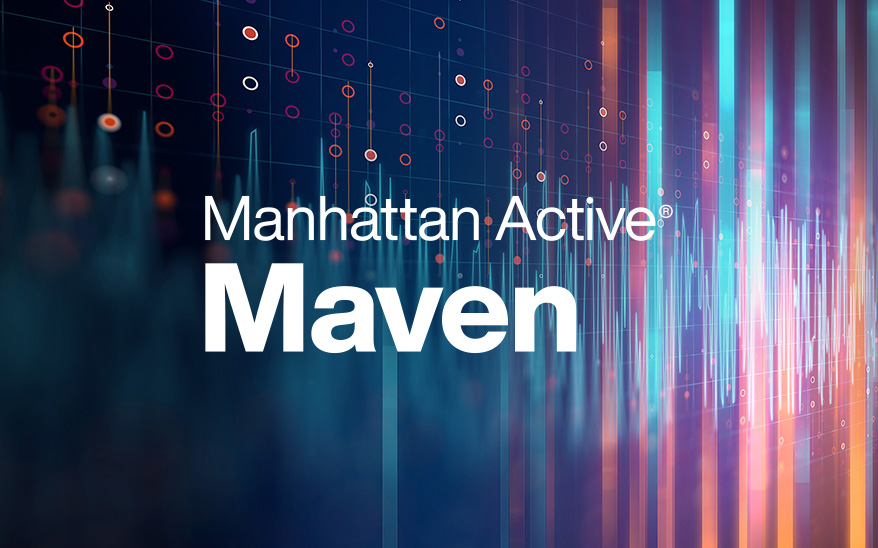Orchestrating Agentic AI into Transportation & Logistics Operations
Understand what agentic AI really means for transportation and logistics—and how it might change the way planners and operators approach their work.
From Hype to Action
Ready to Transform Your Operations?
The buzz around agentic AI and AI agents is impossible to ignore. But for supply chain professionals, the real question is simple: what can it actually do for operations?
This candid conversation between long-time industry veteran, and ex-Coca-Cola supply chain executive, Chris Gaffney, and logistics software expert, Bryant Smith, offers clear, non-hype answers. Critical questions include: What is agentic AI—and why does it matter now? How can AI agents help solve complex transportation planning challenges? And what needs to be true for AI agents to be trusted—from technical design to reliability, scalability and day-to-day usability.

Key Takeaways
- Beyond Visibility: Agentic AI goes beyond control towers—moving from flagging issues to recommending and even executing corrective actions.
- Quick Wins First: Early adopters see value in automating low-risk, repetitive tasks like appointment scheduling, shipment monitoring and routing guide analysis.
- Reclaim Time: Supply chain professionals spend up to 20 hours per week on non-value-added work. Agentic AI frees them to focus on strategy and problem-solving.
- Trust is Critical: Adoption succeeds when organizations start small, monitor agent actions, and expand gradually into higher-stakes decisions.
- Data Discipline Required: Clean, reliable data is the foundation for effective AI. Poor inputs mean poor outcomes.
The entire industry is facing rising costs, demand volatility, and growing service expectations. Traditional tools—like dashboards and control towers—are no longer enough. They tell you what went wrong but don’t fix it.
Agentic AI changes the equation. It augments human planners, acting as always-on digital teammates that can detect problems, recommend actions and carry them out. For executives, this is a path to resilience and productivity. For CIOs and software buyers, it’s a warning: not all “AI” is equal. The real differentiator is true agent-based automation—not just analytics wrapped in AI branding.
- What agentic AI really means for transportation and logistics—beyond buzzwords.
- How AI agents differ from bots, dashboards, and control towers.
- Real use cases: routing guide analysis, tendering, shipment exception handling, and appointment scheduling.
- How to build trust in AI systems by starting with low-risk automation before scaling.
- What executives, warehouse leaders, and CIOs/CTOs should ask when evaluating software vendors’ AI claims.
Speakers
Don't have time to watch the video? Read the recap.
Beyond the Rear-View Mirror
For years, the pinnacle of supply chain tech was the "control tower", a centralized hub for visibility. But as Chris Gaffney points out, industry leaders have grown weary of tools that only look backward. He recalled a sentiment from his time at Coca-Cola, "We wouldn’t invest in any control towering that's all rear-view mirror. Everything needs to aspire to be descriptive or prescriptive."
This is where agentic AI changes the game. As Bryant Smith explained, it’s the difference between seeing a problem and solving it. While a control tower might flag a late shipment, an AI agent can do much more.
"Not only is the agent scouring your network for that data, but it’s also able to generate and surface that information... and then take it a step further and recommend actions. Smith noted. "And then even so much further, you can have the agent do the action on your behalf."
This leap—from passive visibility to actual problem-solving—is the core of the agentic promise: AI that doesn't just report, it acts.
Human + Machine, Not Human vs. Machine
With all this talk of automation, a natural fear arises: are we designing humans out of the equation? Both Gaffney and Smith pushed back hard against this idea. The goal isn't to replace planners but to empower them.
A study cited found that the average supply chain professional has 20 hours of non-value-added work in their week. Agentic AI's first and most powerful use case is to absorb these mundane, repetitive tasks—chasing down appointments, monitoring on-time status, running routine reports—freeing up skilled employees to focus on work that requires human intellect.
But there’s a catch. The biggest risk isn't job replacement; it's intellectual laziness. "Don't outsource your thinking, because that's the trap," Gaffney warned. This sentiment was echoed in the academic world, where the focus is shifting from banning AI to teaching students how to use it as a tool to enhance – not bypass – their own critical thinking.
At its core, the conversation underscored a simple truth: agentic AI is not about replacement, it’s about empowerment.
Building Trust, Step by Step
For any of this to work, users must trust the technology. Smith acknowledged that this is a major hurdle. You can’t just flip a switch and expect a planner to hand over the keys to an algorithm. Building trust is a deliberate process.
The key is starting small and proving value. A smart approach could see agents first tackle low-risk decisions, like rescheduling a simple delivery appointment, while high-stakes choices involving money, like freight invoicing, remain under human control.
Smith also painted a picture of a user experience designed for the modern worker: a "social media feed of activity" that shows what the agents have done, coupled with a clear queue of exceptions that need a human touch.
He emphasized, "If you're going to have agents performing actions on your behalf, you want to make sure they're doing the right actions, but also you need to monitor them."
In the end, adoption depends less on the technology itself and more on users’ confidence in it—the foundation of successful agentic AI is trustworthiness.
Roadmap for Adoption
What organizations need most at this early stage is not hype but practical guidance—a roadmap that helps them start small, build confidence and scale responsibly.
The discussion offered clear, actionable advice for any organization looking to get started or accelerate its journey with agentic AI.
Ultimately, agentic AI is more than just the next tech buzzword. It's a fundamental shift in how work gets done, offering a tangible path to more efficient, resilient and intelligent supply chains. But like any powerful tool, its success will depend not on the technology itself, but on the thoughtful, human-centric strategy behind its implementation.
Want to Learn More?
Explore how to prepare your enterprise technology for the age of Agentic AI.









